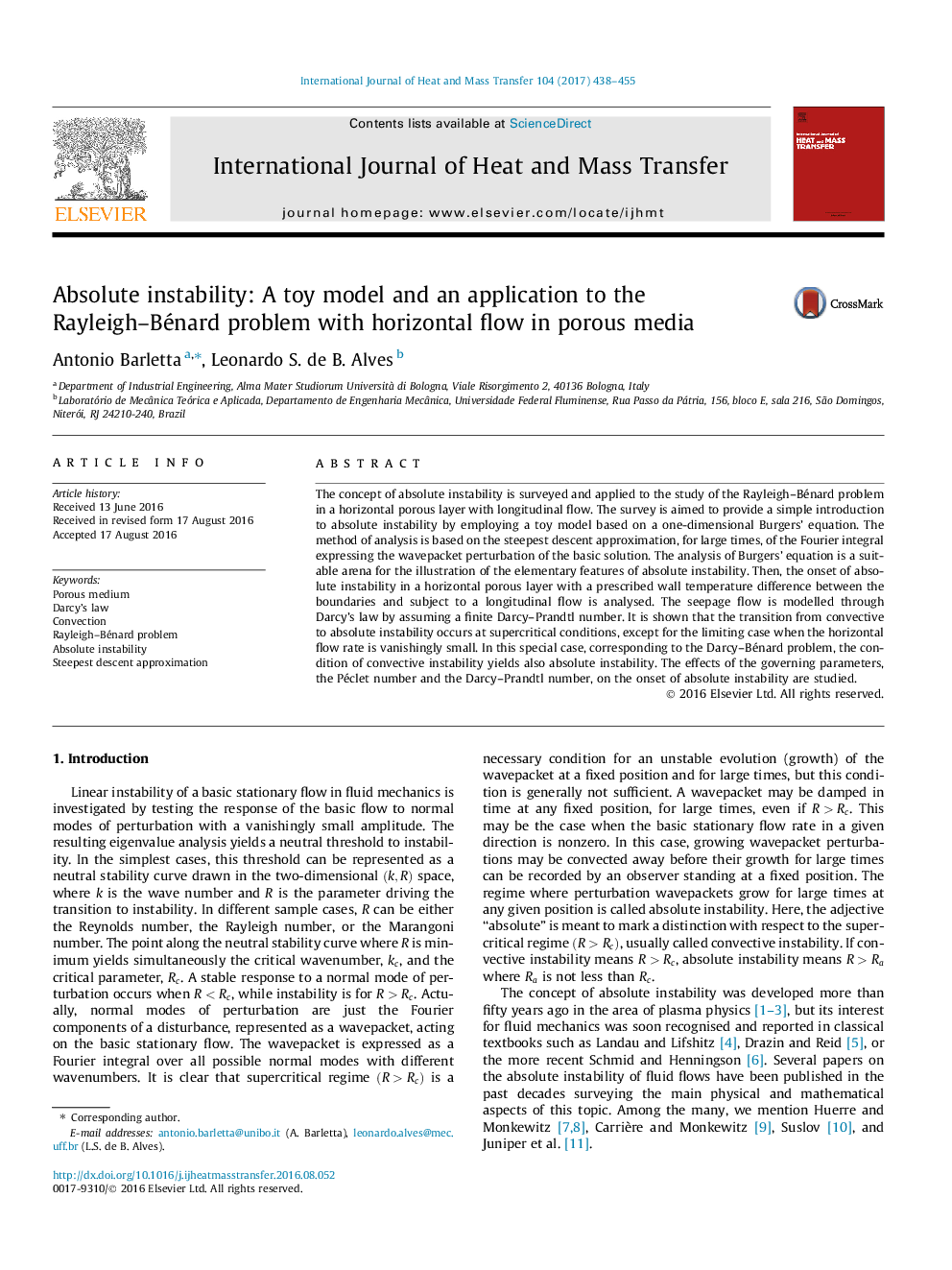| Article ID | Journal | Published Year | Pages | File Type |
|---|---|---|---|---|
| 7054902 | International Journal of Heat and Mass Transfer | 2017 | 18 Pages |
Abstract
The concept of absolute instability is surveyed and applied to the study of the Rayleigh-Bénard problem in a horizontal porous layer with longitudinal flow. The survey is aimed to provide a simple introduction to absolute instability by employing a toy model based on a one-dimensional Burgers' equation. The method of analysis is based on the steepest descent approximation, for large times, of the Fourier integral expressing the wavepacket perturbation of the basic solution. The analysis of Burgers' equation is a suitable arena for the illustration of the elementary features of absolute instability. Then, the onset of absolute instability in a horizontal porous layer with a prescribed wall temperature difference between the boundaries and subject to a longitudinal flow is analysed. The seepage flow is modelled through Darcy's law by assuming a finite Darcy-Prandtl number. It is shown that the transition from convective to absolute instability occurs at supercritical conditions, except for the limiting case when the horizontal flow rate is vanishingly small. In this special case, corresponding to the Darcy-Bénard problem, the condition of convective instability yields also absolute instability. The effects of the governing parameters, the Péclet number and the Darcy-Prandtl number, on the onset of absolute instability are studied.
Related Topics
Physical Sciences and Engineering
Chemical Engineering
Fluid Flow and Transfer Processes
Authors
Antonio Barletta, Leonardo S. de B. Alves,
